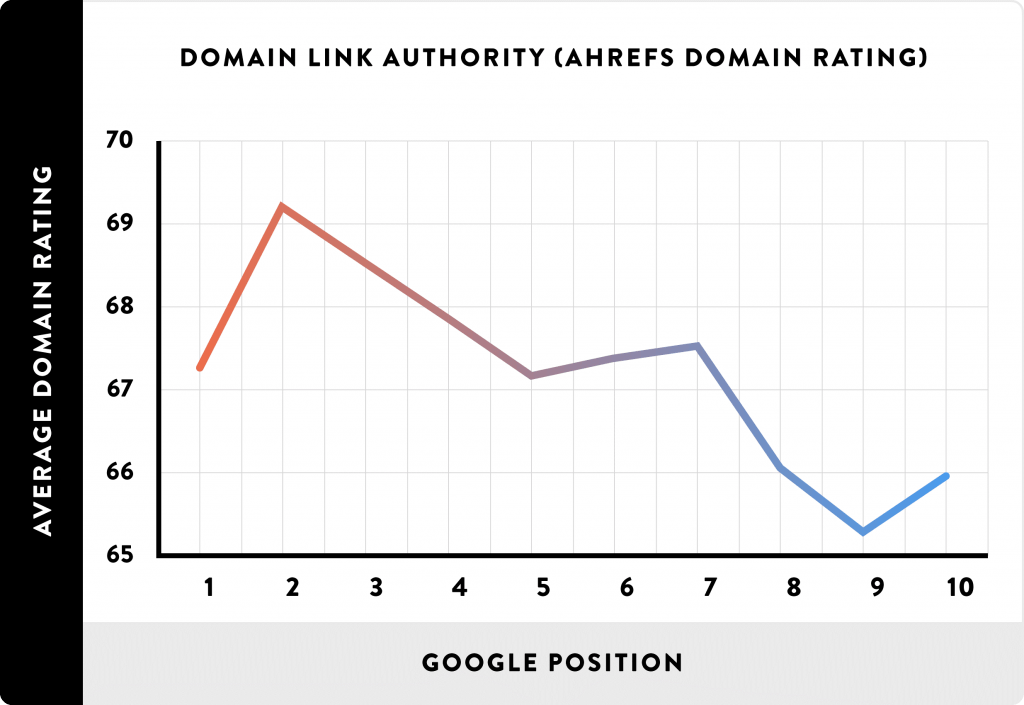To really understand how you can rank better, you need a firm grasp on how Google operates. The search engine has never (and almost definitely will never) reveal the full extent of its algorithm, and new factors are introduced regularly which can affect rankings. As SEO professionals, it’s our job to test, research and study the industry to adapt to new parameters and keep up pace with the competition.
Towards the end of 2015, Backlinko released its latest SEO ranking factor correlation study. One million SERPs were analysed as part of the study, which looks at common SEO ranking factors and how much they correlate with the first page of search engine rankings. It’s important to read these studies with an open mind and think about why certain correlations are happening. I’ve said it before and I’ll say it again, nobody is ever going to reverse engineer Google’s complex and multi-layered algorithms with a correlation study. However, we find them valuable and interesting, as they can give us some insight into the strength of different signals and how their weight might be changing over time. So, what did the study find and how should it affect the structure of your future SEO strategies?
1. Backlinks are an extremely important Google ranking factor
The number of domains linking to a page correlates with rankings more than any other factor.
When it comes to SEO, high-quality backlinks are still the ultimate indicator to Google that you’re a relevant and trusted presence online. Most SEO strategies should incorporate some type of link-earning activity. This doesn’t mean explicitly asking for links, but rather creating awareness and engaging content that mean other websites will want to link to your website. It’s no surprise then, that Google still uses link signals as a massive ranking factor, and highlights how important it is to have a range of relevant and high-quality backlinks supporting your site.
2. A site’s overall link authority strongly correlates with higher rankings
As measured by Ahrefs’ Domain Rating.
In many ways, this point is heavily influenced by the first finding. An SEO strategy led by acquiring good quality backlinks will deliver more authority to your website. It’s important to point out that Ahrefs’ domain rating isn’t a Google metric, nor is Moz’s domain authority, or Majestic’s trust flow. Although not definitive, we can use these metrics, along with many others, to help us understand the quality of a website.

3. Content rated as “topically relevant” significantly outperformed content that didn’t cover a topic in-depth
Publishing focused content that covers a single topic may help with rankings.
Quality content has always been important, but as Google’s ability to analyse content and a user’s reaction to it becomes more advanced, the need for quality will become even more apparent. On-site copy should always be optimised and informed by keyword research. Some people believe that keyword research should be replaced with user intent analysis – we believe in a combination of the two. You can still understand and do a good job of satisfying intent with a keyword-led approach. We have seen inconsistencies in Google’s results for phrases with the same semantic meaning and intent, so until that gets better, we’ll still be looking at the phrases users are actually searching for. RankBrain was introduced to help understand queries better and aims to return more relevant results. However, for a lot of commercial queries, the meaning of the query is often clear or the phrase is used a lot in search, so RankBrain doesn’t have a lot to do.
4. Longer content tends to rank higher in Google’s search results
The average Google first page result contains 1,890 words.
Industry best practice dictates that long-form content that covers a topic in more detail and offers a reader something unique generally ranks better. Length isn’t always indicative of quality, but it’s just one factor that Google uses to decide how good a piece of content is. At 1,890 words, this new average length of well-ranked content shows that Google increasingly favours long-form content. Remember, if you’re going to spend the time creating a piece of content, make sure you’re adding something to the conversation and the length of the content makes sense for the page you’re creating it for.
5. HTTPS had a reasonably strong correlation with first page Google rankings
This wasn’t surprising as Google has confirmed HTTPS as a ranking signal.
According to Ahrefs, only about 1 in 10 of the top 10,000 domains have a ‘flawless HTTPS set up’. That means many are missing out on both the security and ranking benefits that come with the system. HTTP now feels outdated and as Google seems to be rewarding sites which have the privacy interest of their users at the forefront of their minds, all webmasters should consider switching to HTTPS. If you’re launching a new site, then HTTPS is the way to go. If your site already exists, then think more carefully about the change. There are other things to think about before redirecting all of the URLs on your site.
6. The use of Schema markup doesn’t correlate with higher rankings
Despite the buzz around Schema.
It’s still best practice to use Schema but there’s simply no evidence it has any effect on rankings. That doesn’t mean you shouldn’t still implement effective Schema markups, though. Granted they may not improve your rankings, but they can still be beneficial from a UX perspective. Use it right, and Google can more effectively display you on the SERP. Having clear and consistent information about your brand will mean users understand you easier and can get what they want from you. Get more information on how to use Schema markup here.

7. Content with at least one image significantly outperformed content without any images
However, using a greater amount of images does not influence rankings.
There’s a lot of evidence that multimedia content outperforms text-only content. Backlinko’s study further proves that Google is rewarding domains that offer their readers more visually interesting content. Images are inherently engaging and can often illustrate points quicker and more effectively than text, so should be used where relevant. Research what it is your customers want to see, they may want high-quality aspirational imagery or even images of other customers. The team at 37 Signals saw a huge boost in click-through rate when they started featuring images of their customers on their landing pages, for example. Images also break up text in longer content and make it more readable, which is important if you want to keep users on the page.

The importance of page layout: Image source
8. There is a very small relationship between title tag keyword optimisation and rankings
This correlation was significantly smaller than we expected, which may reflect Google’s move to Semantic Search.
Keywords are still important, as evidenced by the relationship between title tag optimisation and ranking. However, the correlation between the two isn’t huge and this is yet another sign that search engines do, and will increasingly, look at things like title tags on a more semantic level. As mentioned above, we have seen inconsistencies in Google’s results, and our own internal tests have shown it’s still beneficial to optimise page titles where possible. It’s important to keep in mind that a title should read well, portray the brand in the right way, and give the searcher a reason to click. Essentially, you should still optimise your title tags with relevant keywords, but simply stuffing keywords into them won’t have the same effect as it may have had in the past.
9. Site speed matters
Based on data from Alexa, pages on fast-loading sites rank significantly higher than pages on slow-loading sites.
Site speed is one of the most important parts of a user’s experience on your site. The average internet user only has an attention span of one second before they notice something isn’t instant, then only around ten seconds before they’re completely disinterested. Because of this, it’s really important your site serves them the information they want, quickly. Many factors can affect site speed and it may be worth getting a site audited if it becomes a big problem for you. However, small changes like optimising images so they’re the correct size for your page and turning off any plugins you’re not using, can all have an immediate effect. Google’s PageSpeed Insights tool is a good starting point on the road to a faster site.
10. Low bounce rate is associated with higher Google rankings
This was found using data from SimilarWeb.
A high bounce rate is a tangible and obvious indication that you could be doing something better on the page (in most cases – sometimes a high bounce rate can be a result of your content sufficiently answering a query. News sites and blogs tend to have higher bounce rates). A low bounce rate often means the opposite. If users are staying on your site for prolonged periods of time, it means you’re offering something they want. User experience is key if you want to maintain a low bounce rate. Make sure content is easy to read, to the point and includes clear calls to action that don’t leave users feeling confused or disinterested.
11. Exact match anchor text appears to have a strong influence on rankings
Despite Google’s many Penguin updates.
Exact match anchor text and the use of it is a controversial subject. Yes, it’s clearly still a signal, but controlled anchor text can be a sign of a low-quality link. We aim to earn links where we don’t control the anchor text. Too much control and there could be an unfriendly Penguin waiting around the corner for you…If you gain an exact/partial match anchor text link that you didn’t ask for then great but we wouldn’t recommend actively trying to chase anchor text.
Let us know your thoughts on the study results on Twitter @searchlabs
Interested in how technical SEO may affect rankings? Check out our Head of Technical SEO’s experiment on the effect of keywords in URLs.


